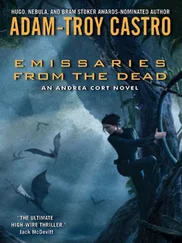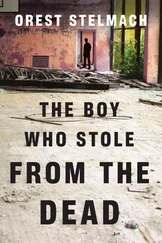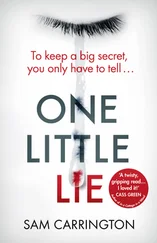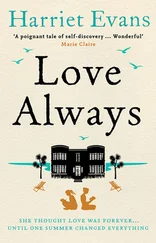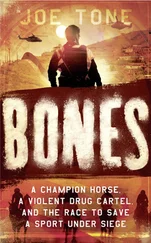It can be gruesome, but I love my job. I thrive on the challenge of solving a mystery, of working with complex puzzles that call upon every ounce of my wit and resourcefulness. I cherish the men and women with whom I work, and I feel honored to be accepted as one small part of the team of law enforcement and medical workers who strive so hard to bring justice into the world. That mission, above all, is what drives me, even when I'm working late into the night on a seemingly hopeless case.
It's taken me half my life to find this work that I love so much. My first profession was as a medical illustrator, working with Dr. Jack Hughston as he developed pioneering surgical techniques in sports medicine. I was proud of the contributions I had made to the work of surgeons and researchers, but after two decades of creating sketches, models, and computer-generated animation, I started looking for a way to become a scientist in my own right. When a detective I happened to be dating started telling me about his cases, I became intrigued with the world of law enforcement. When his recommendation led to my creating a facial reconstruction of an unidentified homicide victim, I was hooked.
Coping with the aftermath of violent human behavior has its rewards, but also its pitfalls. From the moment I entered the world of murder investigations, I had to learn that my life was no longer my own. I would be on call twenty-four hours a day, seven days a week, through holiday weekends and times that had theoretically been set aside for vacation.
There were emotional demands as well. If I was truly to understand what had happened to the men and women whose remains I handled, I had to understand the depravity of human violence that had led to their deaths. I was sucked down into this vortex of murderous hate and malice each time I dealt with mutilated body parts and skeletal remains of murdered victims.
Still, it's been an exhilarating journey, and I wouldn't change it for the world. I've crawled deep into Kentucky coal mines and clung to the rock faces of steep mountains. I've worked lonely murders out in the backwoods and mass disasters in the centers of major cities. I've met killers who turned themselves in to the authorities so they could get free medical care from prison doctors, and I've brought comfort to survivors who refused for decades to give up hope of finding out what happened to their missing loved ones. My cases have ranged from the tragic to the downright bizarre, from the awe-inspiring to the purely depressing, but my profession is now my passion: the ultimate challenge-and the ultimate reward.
Pale Death with impartial tread beats at the
poor man's cottage door and at the palaces of kings.
– HORACE
MY FIRST CASE STARTED just as so many cases begin for me today-with an unidentified victim. A couple of bass fishermen had found some decomposed and partially skeletonized remains on the edge of West Point Lake, one of the huge Chattahoochee River impoundments that separate the lower portions of Alabama and Georgia. The man had been shot in the head and his body had washed up onto the riverbank. The Georgia Bureau of Investigation (GBI) had been working the case, but after several weeks, they still had no identification for the victim, and it looked as if this murder might be headed for the cold-case files.
I was still a civilian then, a medical illustrator at a nearby orthopedic clinic, but the police thought I might be able to help by doing a clay facial reconstruction of the victim. When police officers escorted me into the forensic morgue for the first time, I had my first whiff of the smell of decayed human flesh. It was like nothing I'd ever experienced, and I felt an overpowering sense of repulsion. Yet I was also drawn to the mass of bone and decaying tissue that once had been a man-I'd never seen anything like it before. It was slimy and grayish, with bits of bone and rotting leaves and twigs sticking up randomly from a form that I could still recognize as human-but this form had flattened, melted into the black vinyl of the body bag.
As the investigators began to tell me what they knew, I was amazed at how much they'd already learned simply from examining the remains. Enough pelvic soft tissue remained to reveal that this victim was a man; and the coroner, Don Kilgore, had estimated his height from the size label sewn into the trouser remnants that still clung to his leg bones. Now Don gently held the head, which had decomposed down to bare bone, and he showed me the bullet hole, explaining how he could tell where the bullet had entered the man's head, and at what angle. Don had been lucky: He'd recovered a.45-caliber bullet from inside the skull. If police could only link a suspect to the victim, they might be able to solve the crime by comparing bullet evidence.
But the first step, as in every murder investigation, was to identify the victim. Don pointed to some fillings in the man's teeth. If they could just get someone to suggest a name for the victim, he told me, they could probably match the man's teeth to a missing person's dental records. They were starting to lose hope, though. This victim's remains had been here in the morgue for way too long already, and so far no one had come forward with a name.
That's where I came in. At the time, I was dating a detective, Brian McGarr, and all I knew of crime was what I'd heard from him, as he kept me up nights with long, grisly stories of his latest homicide cases. He, in turn, had the incredible good luck to hear all about my exciting work as a medical artist and sculptor, which he at least had the good grace to pretend to find fascinating. Still, maybe he was more interested than I thought. When the West Point case continued to go unsolved, he was the one to suggest to the GBI and the Muscogee County coroner that they commission me to do the facial reconstruction that might help them identify their victim.
Brian and I had a relationship that nicely blended the personal and the professional. He was able to share with me confidential information about police work because I was a volunteer emergency medical technician (EMT) on the local ambulance squad, which gave me an insider's knowledge of the grisly facts surrounding some of his murder cases. Both Brian and I had spent time in the privileged zone behind the yellow crime scene tape, so we understood that unauthorized release of confidential information was forbidden. Still, when professional ethics allowed, we would sit on my back porch for hours hammering out different scenarios that could have caused specific injuries. Sometimes we'd even act out the cases, taking turns playing “killer” and “victim.” When Brian had to testify in court, I'd help him mentally prepare by acting as devil's advocate, pummeling him with questions that challenged his findings at the crime scene. I could also add anatomical facts that supported-or, sometimes, refuted-his interpretation of the victim's fatal injuries. Those conversations were where I first learned to think like a detective. I like to think that, at the same time, Brian was learning to think like a scientist.
Certainly, when it came to analyzing a crime scene and events that led to a murder, Brian was the undisputed expert. But once he realized that my formal training as a medical illustrator enabled me to figure out bullet trajectories and other injury patterns just by reading the autopsy reports, he knew my input was just as valuable as his. At the time, I had no idea that these late-night conversations were actually expanding my understanding of human anatomy and laying the groundwork for a future in forensic anthropology and law enforcement.
A few months before, I'd had my first experience as part of a law enforcement team. Brian had recommended me to do a drawing for an upcoming murder trial. This drawing became a pivotal piece of evidence, enabling prosecutors to demonstrate the pattern of a victim's stab wounds: The injured man was defending himself, not initiating an attack, as the murderer claimed. The D.A. won his case.
Читать дальше

